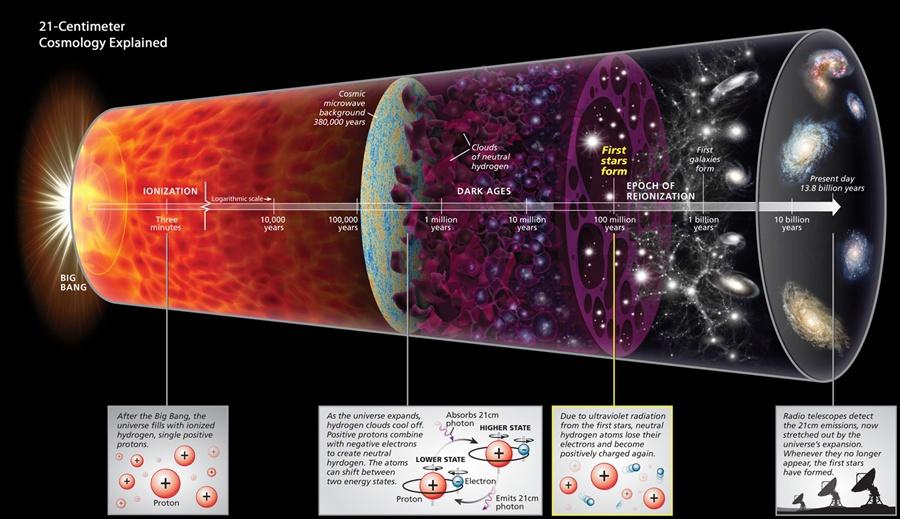Science
During the Dark Ages, the hydrogen gas expands and cools, becoming colder than the microwave background photon gas. At redshifts z~25-30 we expect the first stars to shine in the Universe during the so-called Cosmic Dawn. The resulting ambient radiation (through the so-called Wouthuysen-Field effect) couples the electron spin temperature to the colder hydrogen gas temperature. This latter effect leads to a deep (few tens-hundreds mK) absorption trough at z~20: the depth, width and position of this trough encode the information on the nature of the very first luminous sources as well as the sources responsible for the IGM heating. As the formation of the first sources progresses, X-rays heat the intergalactic medium, causing the absorption trough to disappear and eventually reappear as an emission feature. As heating and star formation progresses further, the UV photons produced in galaxies start to escape in the IGM, originating its widespread ionization which is expected to be concluded at z~6 (end of the Epoch of Re-ionization). Measurement of the 21-cm signal throughout this epoch will not only time the duration of re-ionization but will also tell us about the nature of the first galaxies in the Universe and their interplay with the IGM. The global 21-cm signal has a key dependency on the average ionized fraction and the spin temperature .



